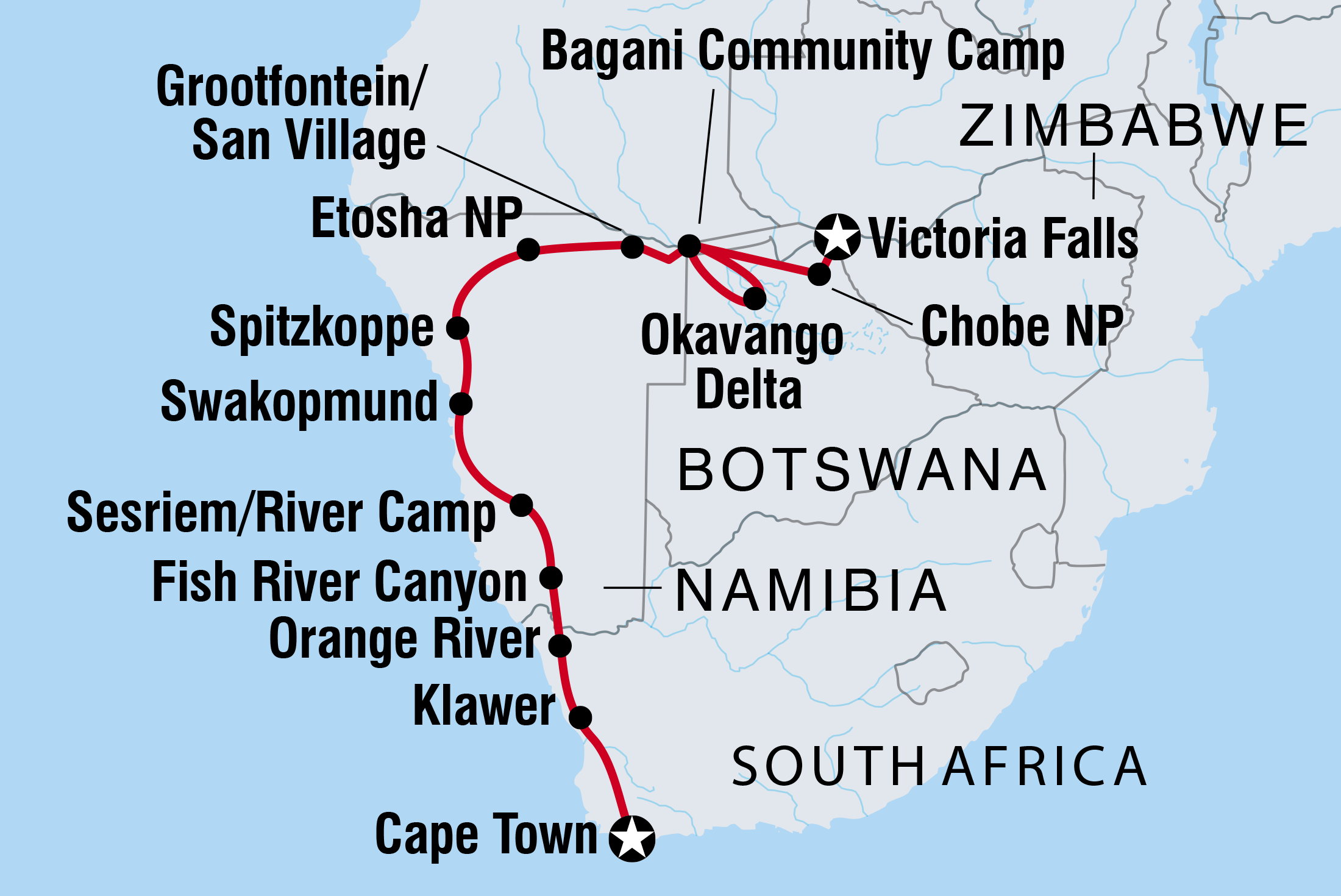Product Description
Highlights
Glide through the lily pad-filled waterways of the Okovango Delta on a mokoro (a small dugout canoe) and escape civilisation with an overnight stay at your island camp.. Be mesmerised by the staggering force and beauty of Victoria Falls, and experience firsthand why it’s known as the ‘smoke that thunders’ – a natural wonder that must be seen to be believed.. Choose to take an optional cruise down the Chobe River for the opportunity to get up close (but not too personal!) to cheetahs, crocodiles and the magnificent African elephant.. Listen to the songs and stories of Namibia’s San people, the oldest inhabitants of southern Africa, and gain an insight into their traditional customs and beliefs.
Overview
Experience the extremes of southern Africa’s landscapes on this Lonely Planet Experience powered by Intrepid. From the thunderous Victoria Falls to cosmopolitan Cape Town, travel down lush waterways in the enigmatic Okavango Delta, cruise past elephants and birds on the Chobe River, climb giant sand dunes in Namibia, camp to the sounds of Africa’s wildlife and spot big cats, rhinos, zebras and antelopes on Etosha National Park’s arid plains. Visit the people who make their homes here, from mokoro polers on the delta to the San people of Namibia. Get ready for this unforgettable tour through a land of contrasts.
Breakfast Included: 19 Lunches Included: 13 Dinner Included: 16
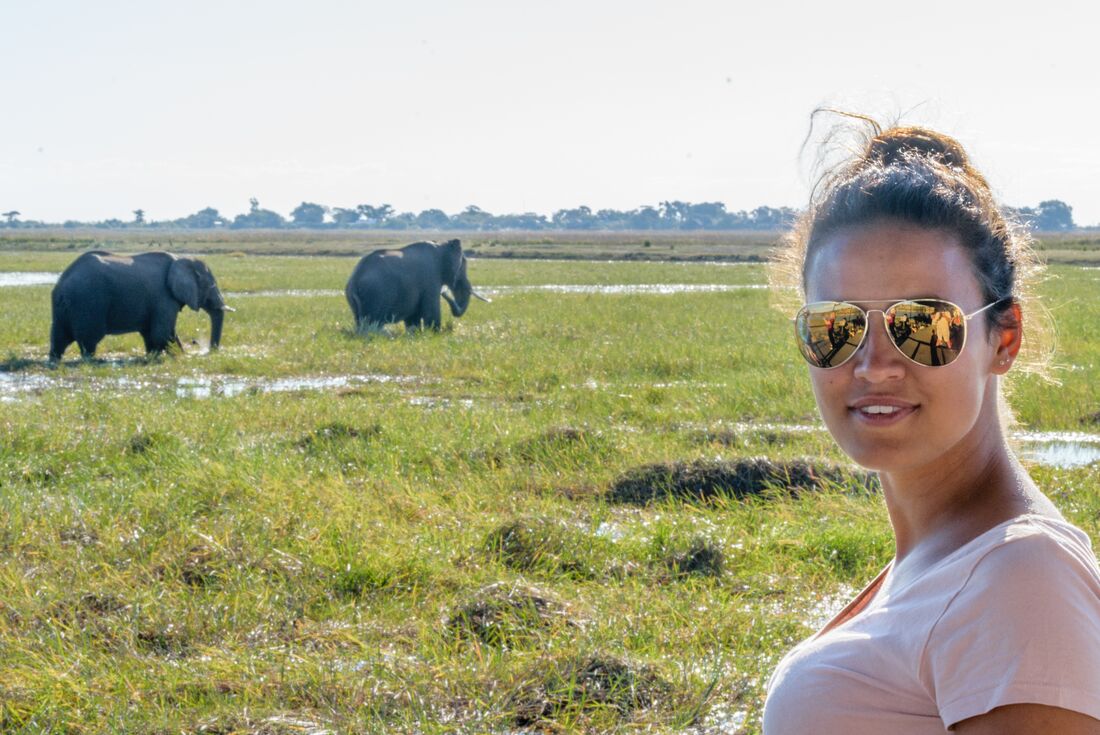
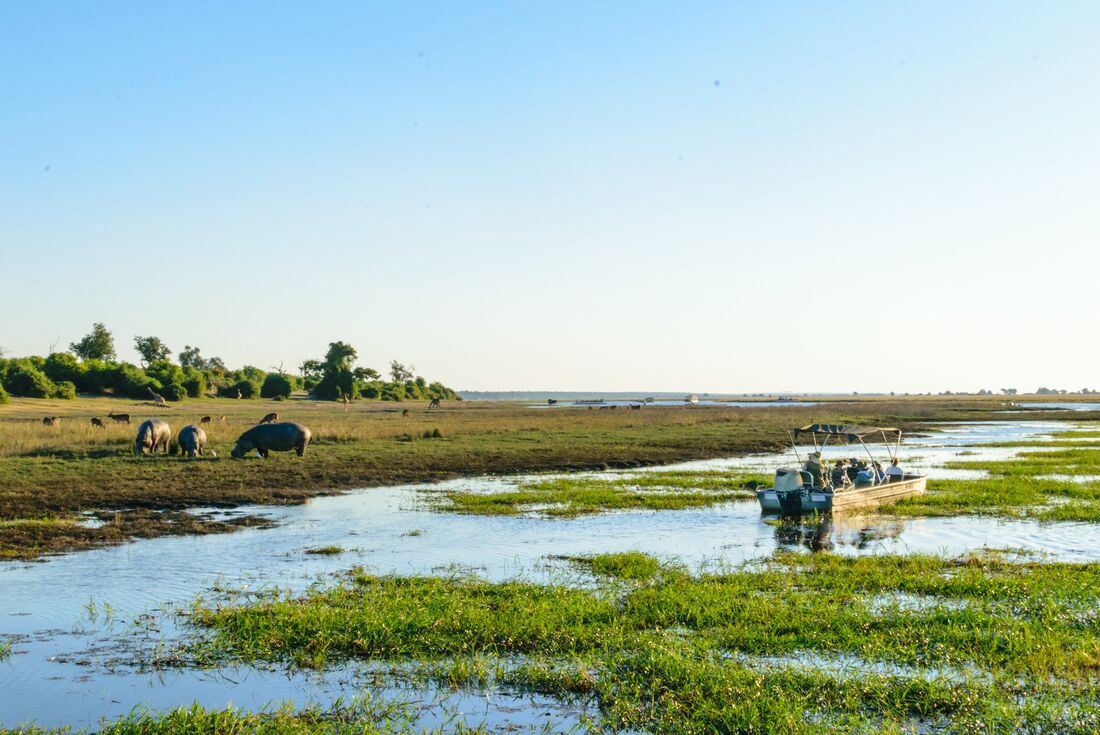
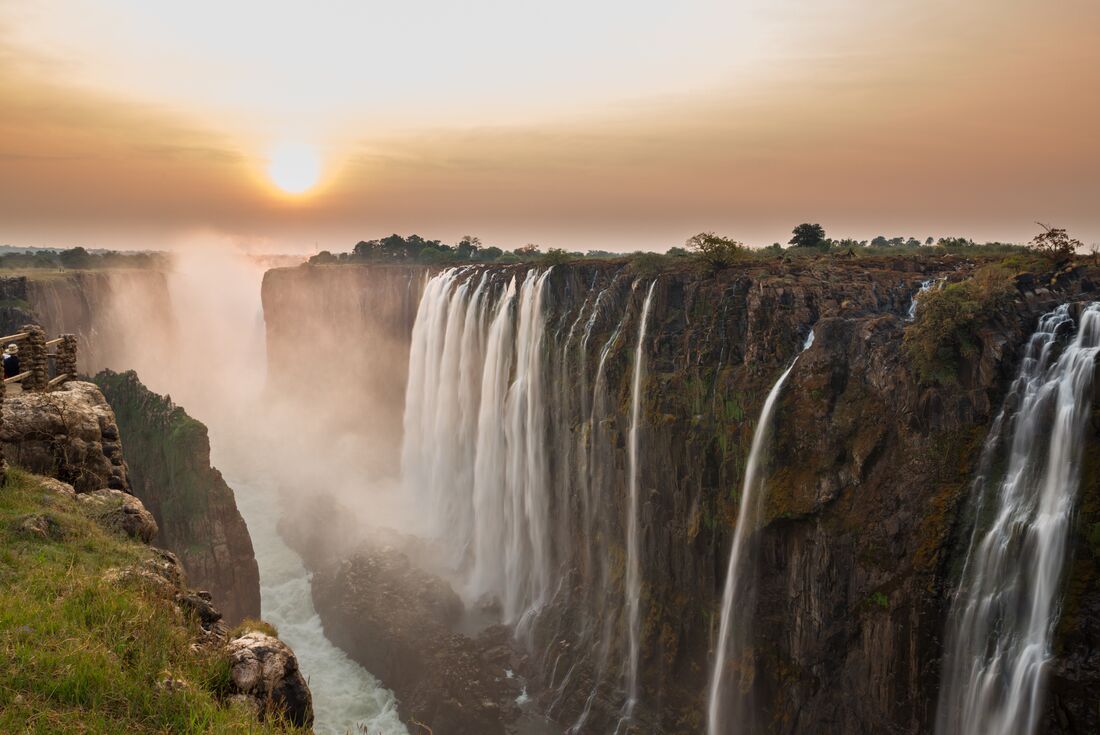
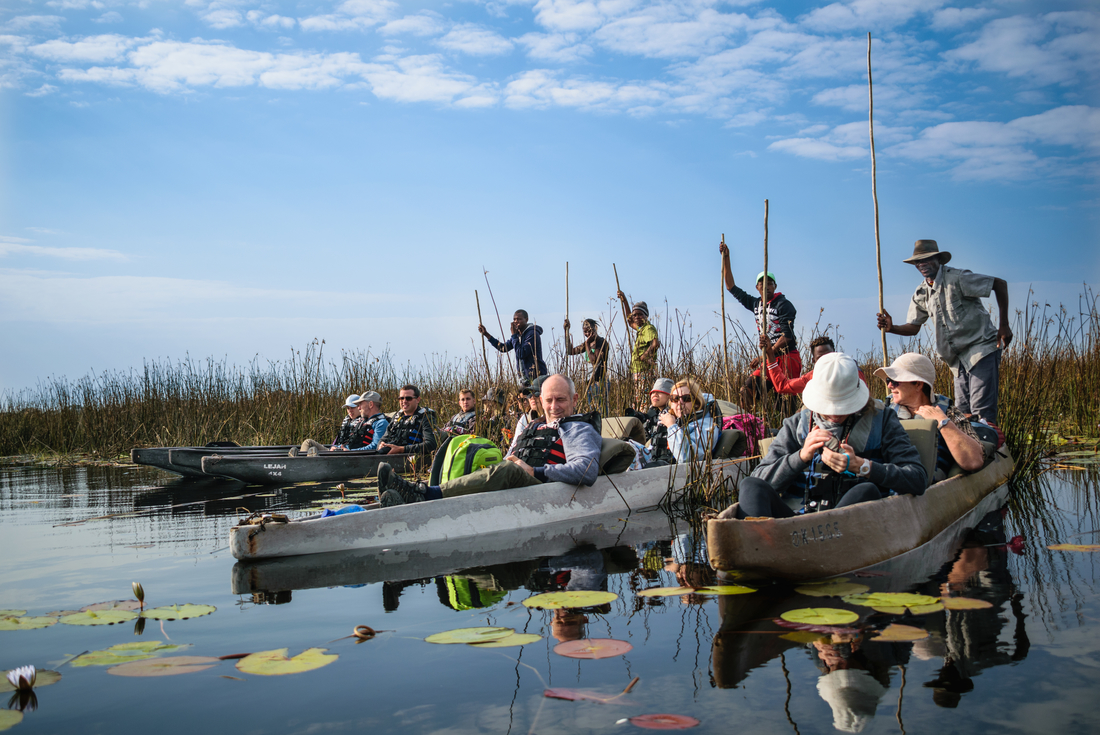
Victoria Falls
Mhoro! Welcome to Zimbabwe. Your Lonely Planet Experience powered by Intrepid begins with a welcome meeting at 4 pm where you'll meet your tour leader and fellow travellers. You can arrive at any time as there are no activities planned until this important meeting. Those who arrive early can choose from many optional activities and sights to see around Victoria Falls. Please note only activities listed in the Special Information section of Day 2 on the itinerary are recommended. It is against company policy for leaders to facilitate the booking of any activities that have not been risk assessed or do not adhere to our company’s Responsible Travel policy and ethos. This includes organising transport to and from these activities in our vehicles.
Victoria Falls
Today you have the option of visiting the magnificent Victoria Falls. Spanning about a mile wide across and falling 108 metres into a narrow gorge below, the spray from the falls can sometimes be seen from kilometres away. In the dry season, the view of the falls is unobstructed by spray and it's possible to see little islets in the river below. To fully understand the sheer force of this staggering curtain of water, it needs to be experienced in person. It's no wonder that the local name Mosi oa Tunya means the 'smoke that thunders'. Alternatively, your leader will be able to recommend a range of other activities that are available.
Chobe National Park
This morning is free for you to continue enjoying all that Victoria Falls has to offer. Afterwards, travel to Chobe National Park in Botswana (approximately 2–3 hours) via the Victoria Falls Wildlife Trust, one of The Intrepid Foundation’s projects. Here you can learn about the rescue and rehabilitation of wildlife, human-wildlife conflict and the Trust’s role in anti-poaching. There may also be a chance to meet any rescued or orphaned wildlife currently in their care. Continue your journey to Botswana's first national park, which is famous for its high concentration of elephants, so keep an eye out! They can often be seen swimming in the Chobe River.
Chobe National Park
Rise and shine for an early-morning game drive. Adventuring through the park, you will get the opportunity to get up close to the wildlife – with luck you will spot a variety of animals and any number of exotic birds. As well as the Chobe icon, the elephant, the river also attracts hippos and crocodiles – the latter like to sun themselves by the water's edge. Cheetahs also come down for a drink. The birdwatching is excellent here too – look out for eagles, kingfishers and marabou storks, among hundreds of other species. In the afternoon perhaps take an optional cruise down the Chobe River – one of the best ways to enjoy the park's animals.
Bagani
Today you will enter Namibia, driving from Kasane to Ngoma Bridge, and on to your camp at Bagani (approximately 7 hours). Bagani is a small, friendly town with some good hiking trails along the river. There are also plenty of nice spots in which you can simply relax and soak up the ambience. This area is the homestead of the local Mbukushu kings. You will have the opportunity to stop at an ATM and a market or shop today. Your camp has flush toilets, showers and Wi-Fi. Upgrades are also available (subject to availability).
Okavango Delta
Drive across the border into Botswana and head south along the Okavango Panhandle (the narrowest part of the delta) to Seronga. Here you'll leave your vehicle and join your transport for the journey into the delta (approximately 4 hours). Take a boat across the swamps to Gao Island to meet your mokoro team and start exploring the Okavango Delta with them. Each mokoro (small dugout canoe) takes two people and is poled along through the waterways by a local tribesman. Reeds and lily pads line the streams, and birds startled by the mokoros rise out of the long grasses. Punting along, you'll hear hippos occasionally piercing the peaceful atmosphere with their grunts. On the first night here, you'll camp on an island well away from civilisation.
Okavango Delta
Continue your trip around the delta and then return to Gao Island before heading to the relative civilisation of Umvuvu Camp. This camp usually has hot showers, and there's a small bar at which you can relax and perhaps enjoy a refreshing sundowner. Today there is an option to take a nature walk with your guide. This is a great chance to discover the beautiful natural surrounds, gain some insight into the history of the local area and look out for animals such as giraffe, zebra and elephants.
Bagani
Cross the border back into Namibia and return to Bagani to camp for the night. Various boat trips, fishing trips and guided hikes are possible from Bagani, so if you're feeling active, get out and make the most of it. Those who are feeling bold might even be able to challenge the local kids to a soccer match – don't expect to win though! Retire to your camp in the evening and enjoy this welcome break from the road.
Grootfontein
Drive to your camp situated 50 kilometres outside of Grootfontein (approximately 7 hours). The town of Grootfontein, part of the Otavi Triangle, tends to get very green in the warmer months but dries out markedly in the winter. If it's springtime, you'll likely see jacarandas in bloom.
Grootfontein/San people
Embark on a 180-kilometre (112-mile) round-trip to visit the San people. The oldest inhabitants of southern Africa, the San, have lived in this region for at least 20,000 years. Listen to their stories and songs and learn how those who still adhere to a traditional way of life emphasise the importance of living in harmony with the environment.
Etosha National Park
Travel about 6 hours to Etosha National Park, making a short detour to stop by Hoba Meteorite, the biggest meteor that has been found on earth. While Etosha National Park is home to a wide range of southern Africa's wildlife, including the big carnivores and five rare or endangered species: black rhino, Hartmann's mountain zebra, black-faced impala, roan antelope and the tiny Damara dik-dik. Game viewing in Etosha is relatively easy due to the man-made waterholes and the large, sparsely vegetated pans. The bushland surrounding the pans is difficult to see through, but there are enough clearings, pans and waterholes to usually allow for some sightings. Embark on an optional evening game drive here in the evening, then spend the night at Namutoni. Accommodation upgrades are on offer here.
Etosha National Park
Enjoy a full-day game drive in Etosha National Park. Namibia has protected its game reserves against poaching, which means significant numbers of elephants, antelope and other herbivores reside here. The park is also home to some 340 species of birds – keep an eye to the sky where you might spot a soaring eagle. Tonight, you will stay at the particularly spectacular Okaukuejo Camp. The camp overlooks a floodlit waterhole visited by many different species throughout the day and night. Upgrades are not available at this location tonight.






